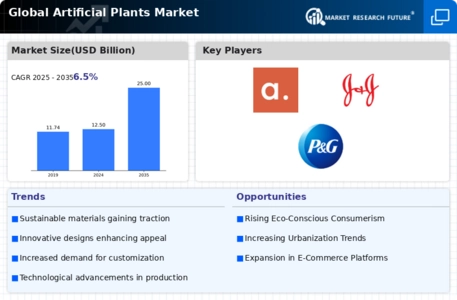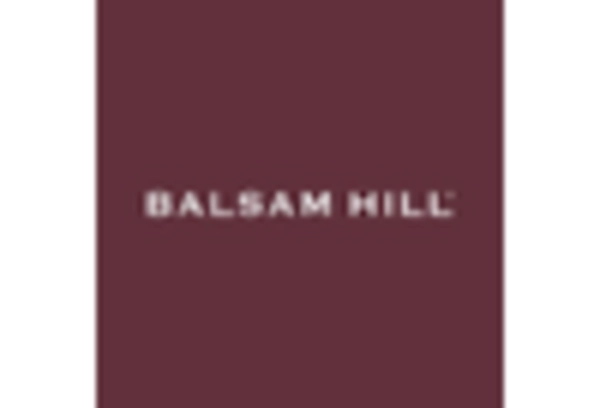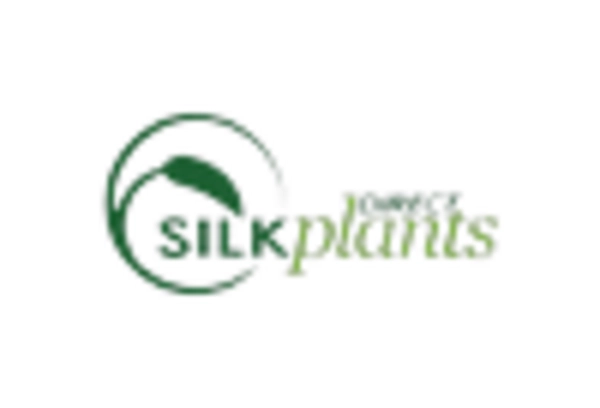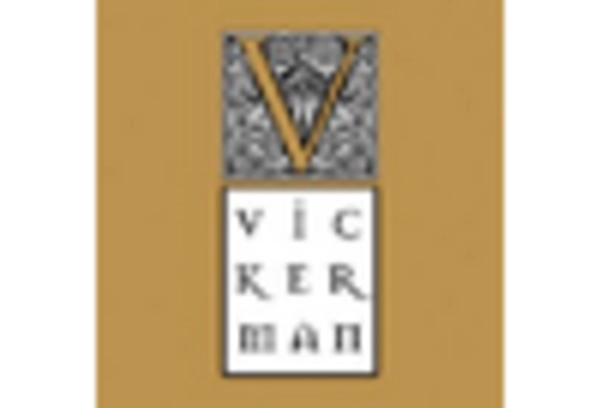E-commerce Growth
The rapid growth of e-commerce is transforming the retail landscape for the Artificial Plants Market. Online shopping platforms provide consumers with convenient access to a diverse range of artificial plants, allowing for easy comparison and selection. This shift towards digital retail is particularly appealing to younger consumers who prefer the convenience of online shopping. Data indicates that e-commerce sales in the artificial plants sector have increased significantly, with projections suggesting that online sales could account for nearly 40% of total market revenue by 2027. This trend highlights the importance of a strong online presence for manufacturers and retailers in the Artificial Plants Market, as they adapt to changing consumer preferences and leverage digital channels to reach a wider audience.
Growing Urbanization
The trend of growing urbanization is influencing the dynamics of the Artificial Plants Market. As urban areas expand, the availability of green spaces diminishes, leading to a heightened interest in artificial plants as a viable alternative for urban dwellers. The convenience of artificial plants, which require minimal maintenance and can thrive in various indoor environments, appeals to city residents who may lack the time or resources for traditional gardening. Market data suggests that urban areas are projected to account for a significant portion of artificial plant sales, with estimates indicating that urban consumers could represent over 60% of the market by 2026. This demographic shift indicates a promising opportunity for the Artificial Plants Market to cater to the needs of urban populations seeking greenery in their living spaces.
Sustainability Focus
The increasing emphasis on sustainability appears to be a pivotal driver for the Artificial Plants Market. Consumers are becoming more environmentally conscious, seeking alternatives that reduce the ecological footprint. Artificial plants, which do not require water, sunlight, or fertilizers, align with this trend. The market for artificial plants is projected to grow at a compound annual growth rate of approximately 5.5% over the next few years, indicating a robust demand. This shift towards sustainable living is not merely a trend but a fundamental change in consumer behavior, suggesting that the Artificial Plants Market is well-positioned to benefit from this growing awareness. As more individuals and businesses prioritize eco-friendly options, the appeal of artificial plants continues to rise, potentially leading to increased market penetration and expansion.
Technological Advancements
Technological advancements in manufacturing processes are likely to play a crucial role in shaping the Artificial Plants Market. Innovations in materials, such as the development of more realistic and durable synthetic fibers, enhance the aesthetic appeal of artificial plants. These advancements not only improve the quality of products but also reduce production costs, making them more accessible to a broader audience. The market is witnessing a surge in demand for high-quality, lifelike artificial plants, which can be attributed to these technological improvements. As manufacturers adopt cutting-edge techniques, the Artificial Plants Market is expected to experience significant growth, with projections indicating a potential increase in market size by over 20% in the next five years. This trend underscores the importance of continuous innovation in maintaining competitiveness within the industry.
Aesthetic Appeal and Versatility
The aesthetic appeal and versatility of artificial plants are driving factors in the Artificial Plants Market. These products offer a wide range of designs, sizes, and styles, making them suitable for various settings, from residential to commercial spaces. The ability to enhance interior decor without the challenges associated with live plants, such as watering and sunlight requirements, makes artificial plants an attractive option for consumers. Market Research Future indicates that the demand for decorative artificial plants is on the rise, with a notable increase in sales for home staging and event decoration purposes. This versatility not only broadens the consumer base but also encourages repeat purchases, suggesting a strong potential for growth within the Artificial Plants Market as consumers seek to refresh their environments with minimal effort.


















Leave a Comment